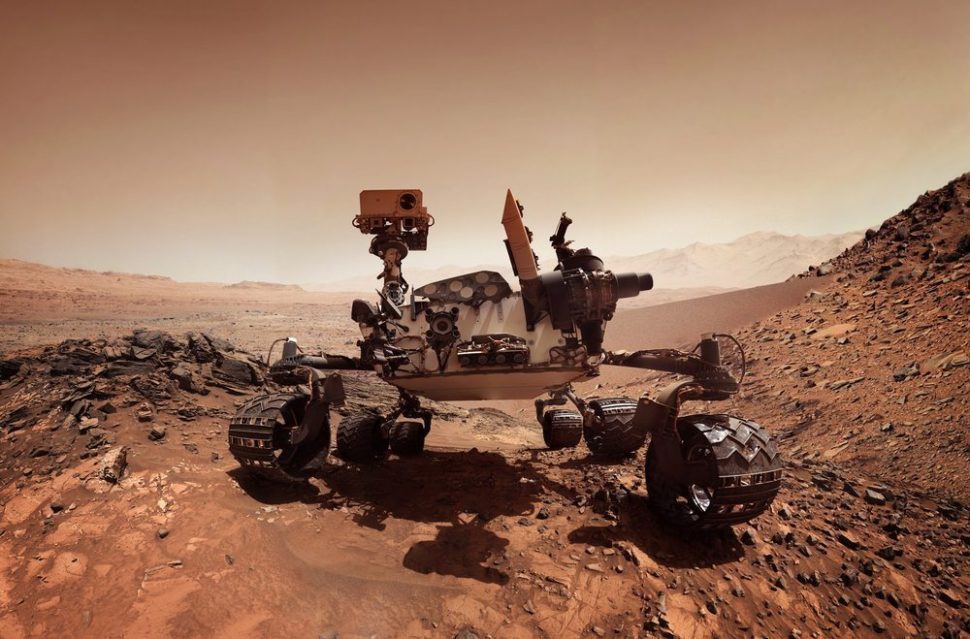Thanks to a new scaling law from MIT that models how objects move through sand, manufacturers can use toy models to predict tire movement and design more efficient, full-scale vehicles – including a next-gen Mars rover.
In aeronautics, engineers use miniature planes in a controlled environment (wind tunnel) to model how aircraft perform in real-world conditions like atmospheric turbulence.
Then, manufacturers apply mathematical modeling and scaling laws to predict how full-sized aircraft will actually perform. This testing model helps ensure optimum safety and efficiency.
Now, a similar sand scaling law has been developed that predicts how full-sized heavy equipment and vehicles move through this granular material and will help researchers develop more specialized trucks, tanks and off-world rovers.
Back to the Sandbox
Those who practice off-roading (especially dune bashing and 4×4 safari fans) know all too well that sand is a tricky surface material that must be approached with caution.
In addition to vigilant and responsible driving habits, sand requires vehicles with specifically adapted and reliable wheels or tracks.
We all played with our Tonka Trucks and race cars in the sandbox as kids. But now, MIT researchers are going back to the drawing board (and the sandbox) to develop more efficient heavy vehicles and planetary rovers.
Using a specially-designed sandbox and toy versions of heavy vehicles, MIT engineers have devised a scaling law to describe how different types of wheels move through sand.
MIT's new sand scaling law to design better heavy equipment and Martian rovers.Click To TweetA paper on the findings – General Scaling Relations for Locomotion in Granular Media – was published in the journal Physical Review E.
In developing the new law, scientists turned to RFT (Resistive Force Theory), which is a set of general equations for granular flow, or the resistive force acting on moving objects by a granular medium.
Researchers simplified the RFT formula by eliminating units from inputs like length, width, and mass. This is because RFT equations with dimensionless parameters allow engineers to work with mini lab versions of the vehicles to predict the behavior of their large-scale counterparts and hone in on the best design.
Toward a More Efficient Mars Rover
Construction equipment like bulldozers, tractors, and excavators as well as military vehicles like tanks that often move through and manipulate granular materials are designed based on arguably broad principles. The new scaling law would fine tune these vehicles designs for optimum performance.
This new sand scaling law would not only help fine tune these vehicle designs for optimum performance but also potentially reduce manufacturing costs and maintenance.
Most exciting, beyond utility vehicles for use on Earth, MIT’s formula can be used to design Mars rovers since the law can also be used for scaling gravity.
This means that once researchers are able to recreate the types of sand and soil present on extraterrestrial surfaces like the Moon and Mars, they will be able to design, test and build highly-adapted next-gen rovers.
All that researchers need is a specimen of real Lunar or Martian soil to apply the scaling law to rover wheel designs and experiment until they accurately determine the best shapes for running smoothly on off-world surfaces.
Near-future designs for rovers like Curiosity, Opportunity, and Spirit would be able to venture farther into Martian dunes with reduced risk of getting stuck in sand traps.
As a result, we’ll be able to collect better data about the Martian environment, which will only aid in manned mission plans and colonization efforts.
As MIT associate professor of mechanical engineering Ken Kamrin notes, the new law and modeling methods also allow researchers to not only validate but replicate findings “many times over”.


















Comments (0)
Most Recent